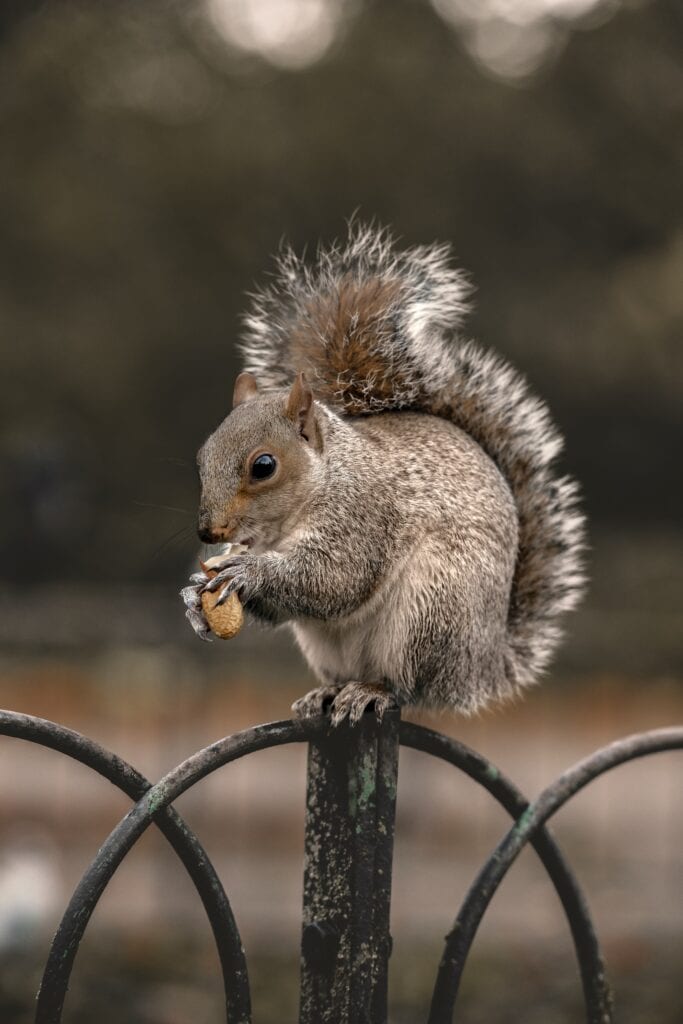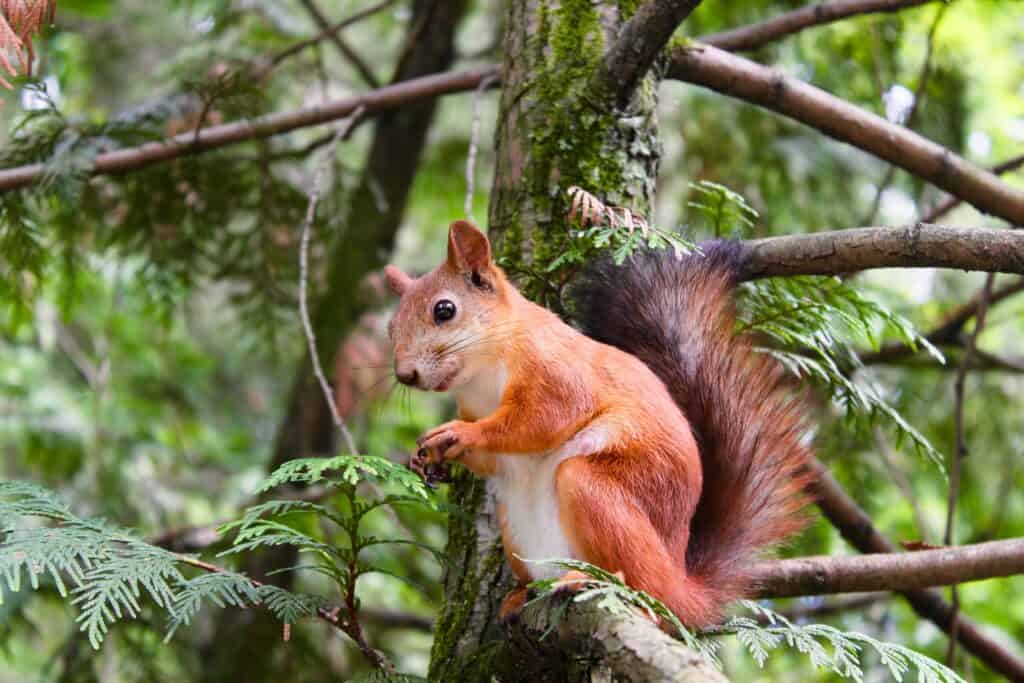Squirrel Solutions
Get A Quote Today!
Squirrels are small to medium-sized rodents known for their bushy tails and tree-dwelling habits. While they are generally harmless and play important ecological roles, they can become pests when they enter homes or cause property damage.
Understanding squirrel control, the common types of squirrels, and implementing preventive measures can help manage and prevent issues associated with squirrel presence:
Types of Squirrels
Eastern Gray Squirrel (Sciurus Carolinensis)
This is the most widespread squirrel species in North America. They have gray fur, with variations in coloration ranging from gray to reddish-brown.
Eastern Fox Squirrel (Sciurus Niger)
Eastern fox squirrels are larger than gray squirrels and have a reddish-brown or grayish-brown fur coloration. They are commonly found in wooded areas and urban parks.
Red Squirrel (Tamiasciurus Hudsonicus)
Red squirrels are smaller than gray squirrels and have reddish-brown fur with white underbellies. They are often found in coniferous forests.

Prevention Tips for Squirrel Control
Seal Entry Points
Inspect your home for any openings or gaps that squirrels can use to enter. This includes gaps in the roofline, vents, chimneys, and openings in soffits and fascia. Seal these openings with sturdy materials like metal mesh, hardware cloth, or caulk.
Trim Tree Branches
Trim tree branches that are close to or touching your home to prevent squirrels from accessing the roof or upper levels. Aim for a distance of at least 6 to 8 feet between tree branches and your home.
Install Squirrel Guards
Install metal or PVC pipe squirrel guards around tree trunks and poles to prevent squirrels from climbing up and gaining access to roofs or attics.
Secure Attic Access
Ensure that attic access points, such as vents and openings, are securely covered with mesh or hardware cloth to prevent squirrel entry.
Protect Bird Feeders
If you have bird feeders, use squirrel-proof feeders or place them on poles with squirrel baffles. These measures can help prevent squirrels from accessing bird feed and discourage their presence.
Remove Food Sources
Keep birdseed, nuts, and other potential squirrel food sources stored in sealed containers indoors. Avoid leaving pet food or unsecured garbage bins outside.
Treatment for Squirrel Control
Habitat Modification
If squirrels are causing damage to your garden or property, consider using squirrel-resistant techniques such as planting squirrel-resistant plants or installing barriers around vulnerable areas.
Repellents
Commercially available squirrel repellents or homemade solutions like hot pepper sprays or predator urine can be used as deterrents. However, their effectiveness may vary, and regular reapplication may be necessary.
Trapping
Live trapping can be an option for squirrel removal, especially when they have already gained access to your home. Check local regulations regarding the trapping and relocation of squirrels, as laws may vary.

Professional Assistance
If you are unable to effectively manage squirrel issues on your own or if squirrels have caused extensive damage, it is advisable to contact a professional pest control service or wildlife removal expert like On The Fly. We can provide safe and effective methods for squirrel removal and exclusion.
It is important to note that squirrels are considered wildlife, and it may be illegal to harm or relocate them without proper permits or licenses in some areas. It is always recommended to check local regulations and consult professionals for guidance on squirrel control methods that comply with local laws and regulations.
